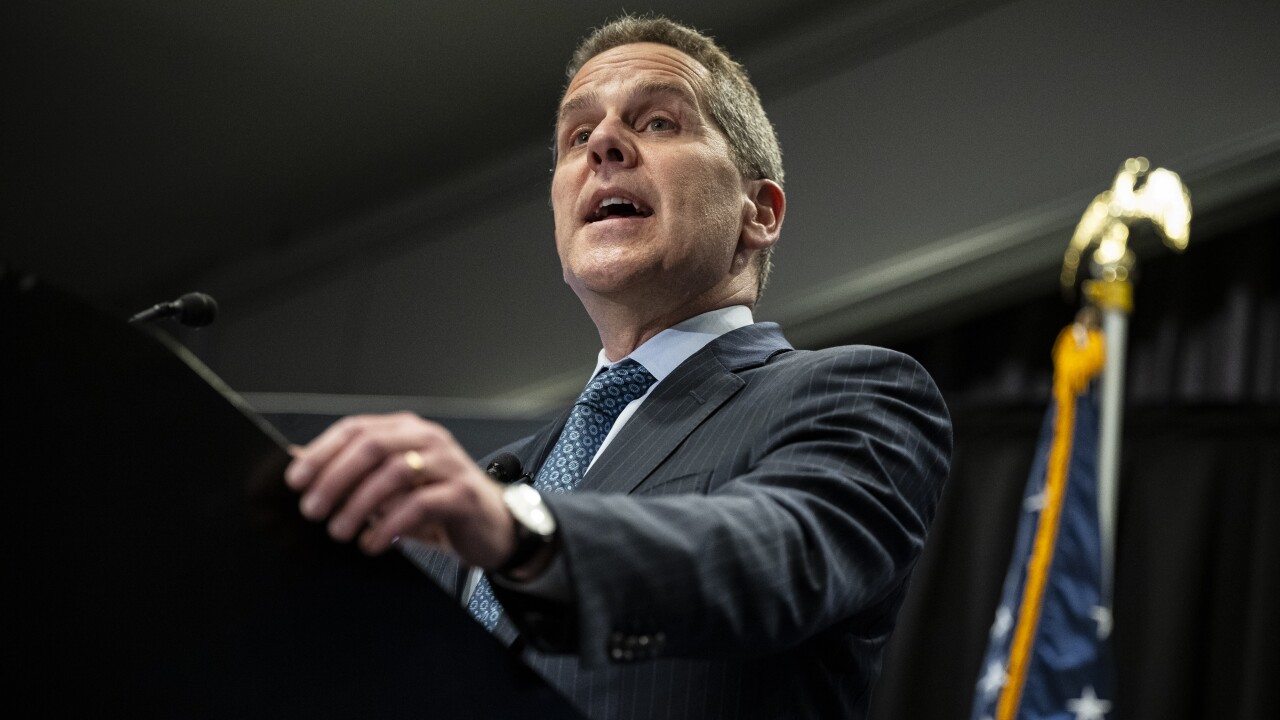Are banks doing enough with artificial intelligence?
On the one hand, there are many clear advantages to deploying AI throughout an organization, including more informed decisions, quicker analysis of large datasets and the cost efficiencies of putting software to work on chores formerly done by humans.
On the other, there are the many questions around AI: What if the data quality is poor and leads to a bad outcome? What if biases are baked into the data or the AI models themselves? Are there certain decisions that should always be left to human judgment?

Ken Meyer the Chief Information Officer of Channel Engineering and Innovation, at Truist Financial in Charlotte, N.C., who will be speaking at next week's
Banks generally seem to be behind some industries such as Big Tech in adoption of AI. Is this sensible caution, given that banking is such a highly regulated industry, or could banks be making a mistake in not moving quickly, and letting fintechs and others gain a competitive advantage?
KEN MEYER: The main driver behind this perception is the technical [inefficiencies] or aging platforms and systems that have been running financial systems for the last few decades. Many of the Big Tech firms or new entrants into financial services are able to build with modern architecture and technology on day one. It takes some time to modernize those technology ecosystems.
That said, we are a highly regulated industry and protecting client information is a top priority. We need to ensure that we don’t move too quickly and put our clients at risk or trigger some form of regulatory risk. I would argue that there are many examples throughout time where banks adapted capabilities as a fast follower, putting them into production in a way that is both safe and current from an experience perspective. The adoption of online and mobile banking in recent years is a testament to that.
What do you think bank executives’ top concerns should be about implementing AI?
When implementing technologies such as AI in banking, it is about how to maintain a high degree of personal touch in the experience to ensure that you don’t lose the trust of clients. By that, I mean if all a financial institution does is use AI algorithms to provide advice to clients, it becomes a robotic experience. When the financial experience lacks the human-touch element, it may erode the trust that people have in a financial services provider and a steward of their wealth and finances. Ours is a different value proposition: We want to establish the trust of our clients through the interconnectedness of technology and touch. Maintaining that balance is key.
Where do you see AI doing the most good in financial services today?
Our purpose is to inspire and build better lives and communities. Every day, the pursuit of better drives us. Ultimately, if we can leverage AI to surface information that is not easily seen by clients that allow them to take action towards becoming more financially fit, this is where AI can help identify things to improve their financial lives. Examples are everything from how to identify better saving habits, to eliminating duplicate transactions, to identifying financial fraud.
Where do you see AI as most useful in Truist?
AI enables us to provide insights into our clients’ financial future that will allow them to become more financially stable and live better lives. And for us, a better financial experience for clients isn’t just about offering the latest digital tools such as AI. It’s truly about creating seamless and effortless connections between people's financial and real lives. When we combine transformative technology such as AI with personal touch, we’re living our purpose by helping our clients have a better, simpler and safer financial experience.
Where do you think financial institutions might be able to use AI in the future?
Given the rapid pace with which technology and innovation is moving, it is hard to predict where AI won’t be used in the future. For us, it is most critical to infuse more intelligence into every technology platform as we move to an increasingly digital-first world.





